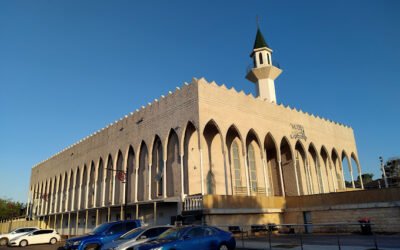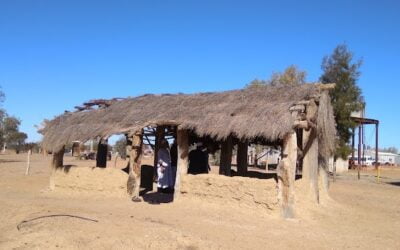Central Adelaide Mosque
Central Adelaide Mosque
- The Central Adelaide Musjid, also recognized as Adelaide City Musjid or Adelaide Central Musjid or Adelaide Musjid, and previously referred to as the Afghan Chapel, stands as a historic landmark in Adelaide, South Australia. Constructed in 1888–1889, with the addition of its four iconic minarets in 1903, it holds the distinction of being the oldest permanent Musjid in Australia. Situated in Little Gilbert Street within the south-west corner of Adelaide’s city center, the Musjid was initially erected to cater to the spiritual needs of “Afghan” cameleers and traders who migrated after working in the northern regions of South Australia. Following a decline in congregation and a period of neglect in the early 20th century, it experienced a revival with the influx of Muslim migrants post-World War II, and has since thrived.
- Hadji Mullah Merban, hailing from Kandahar, Afghanistan, envisioned the establishment of a Musjid upon his retirement after leading camel teams along the Australian Overland Telegraph Line and emerging as a respected spiritual leader. Abdul Wade (also known as Wadi, Wabed, Wahid), originally from the Quetta district (now Pakistan) and a merchant and cameleer in Bourke, New South Wales, assumed the role of trustee and builder of the Musjid. Funding for the project was sourced through donations from the local Muslim community in Adelaide and Melbourne.
- Plans for the Musjid received approval from the Adelaide City Council in 1887, and the construction, a modest brick and stone edifice costing £450, was completed over two years. Hadji Mullah became the inaugural caretaker of the Musjid, residing with his wife in a cottage on the premises. Accommodation was also provided for elderly and unemployed cameleers and other community members.
- By July 1890, Friday night worshippers numbered between 20 to 40, with up to 100 attendees on significant occasions. Muslims from distant locales such as Broken Hill and Kalgoorlie gathered annually at the Adelaide Musjid, particularly during the Fast of Ramadan. The addition of four minarets in 1903 enhanced the Musjid’s architectural charm, while its gardens flourished over time.
- Following a period of disuse and neglect as the original congregation of cameleers dwindled, the Musjid experienced a resurgence in the post-World War II era with the influx of migrants from Bosnia and Herzegovina, Yugoslavia, and newly independent Indonesia. In 1950, Ahmed Skaka, an imam trained in Sarajevo and a former Yugoslav Army enlistee, migrated to Australia and assumed the role of Imam at the Musjid. Together with fellow Muslims, they revitalized the Musjid, which had dwindled to just a handful of elderly Afghan members. Since then, the Musjid has served as a place of worship for migrants from various countries such as Bosnia, Lebanon, India, Pakistan, Indonesia, Malaysia, as well as Australian-born Muslims and converts.



